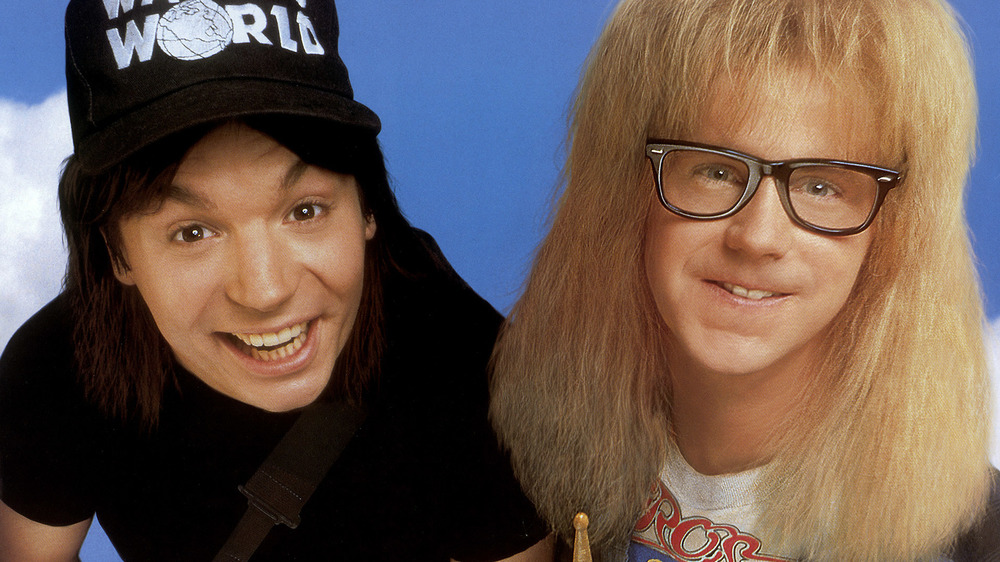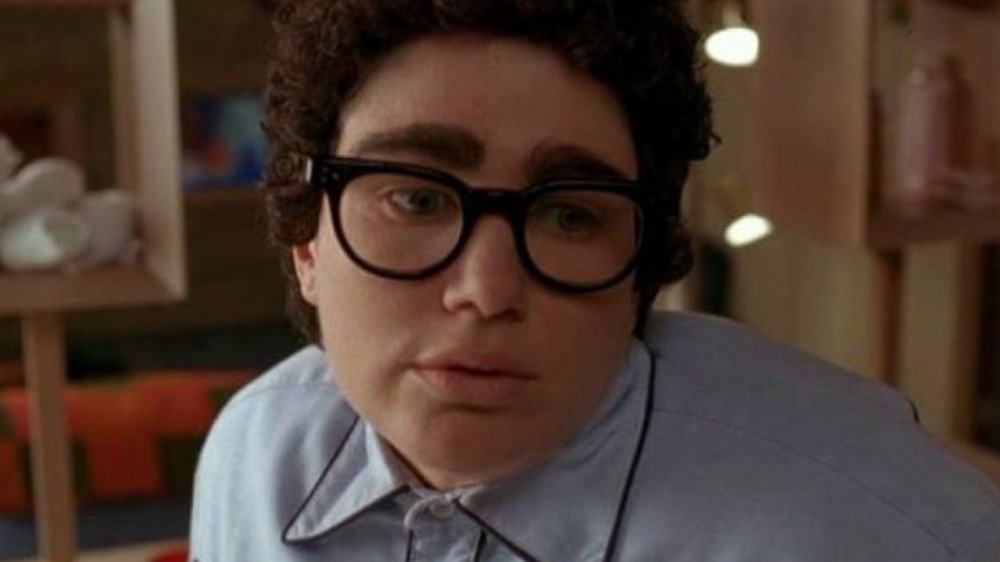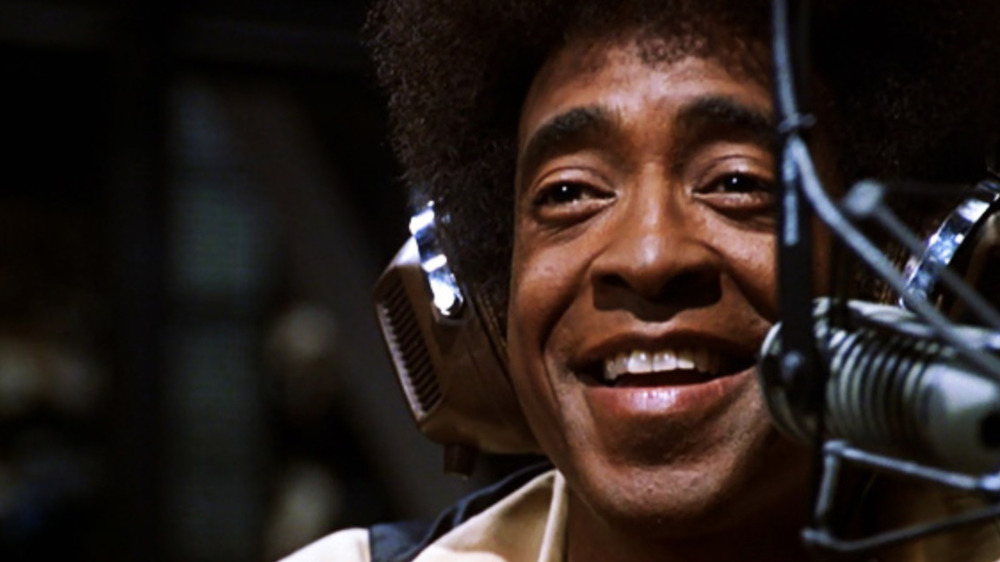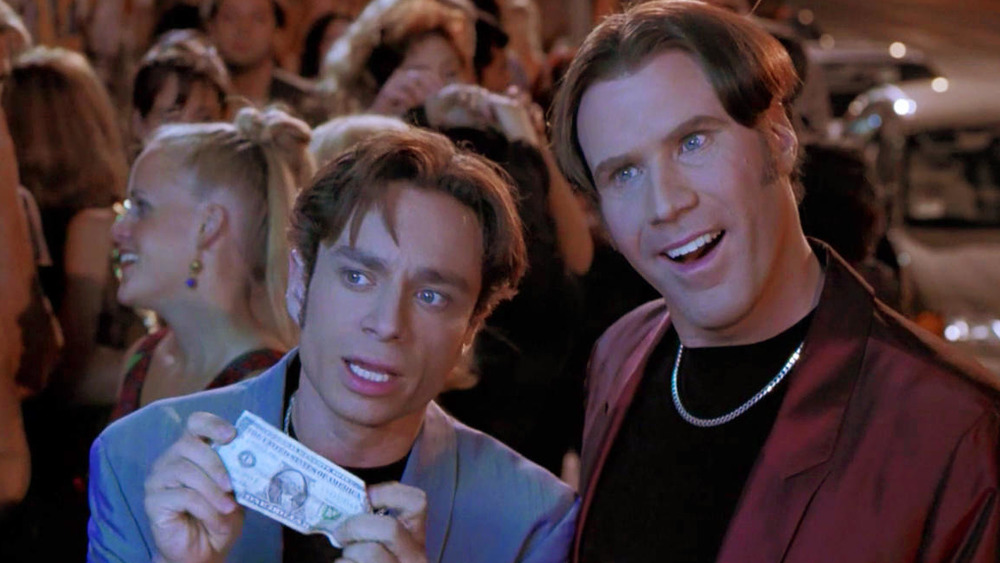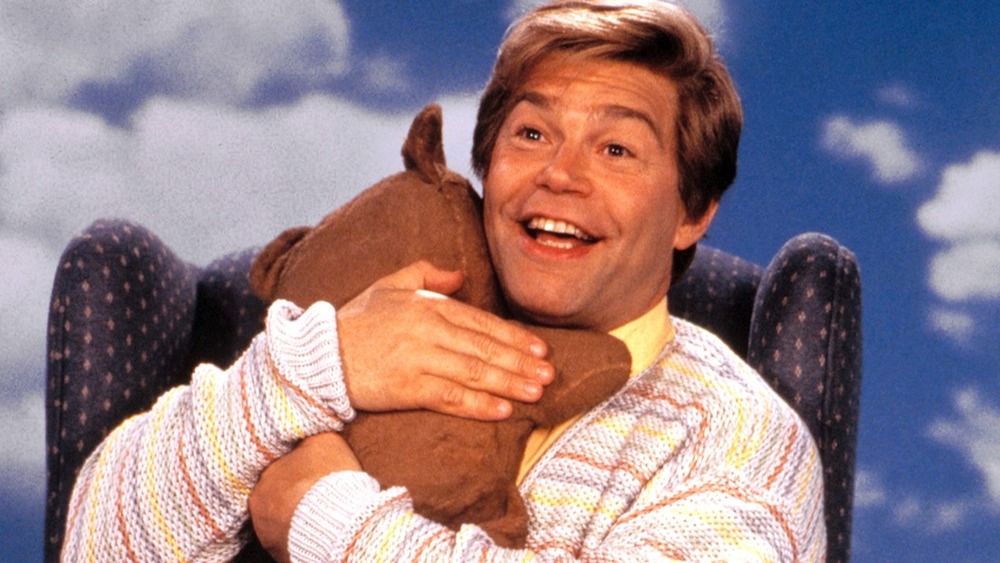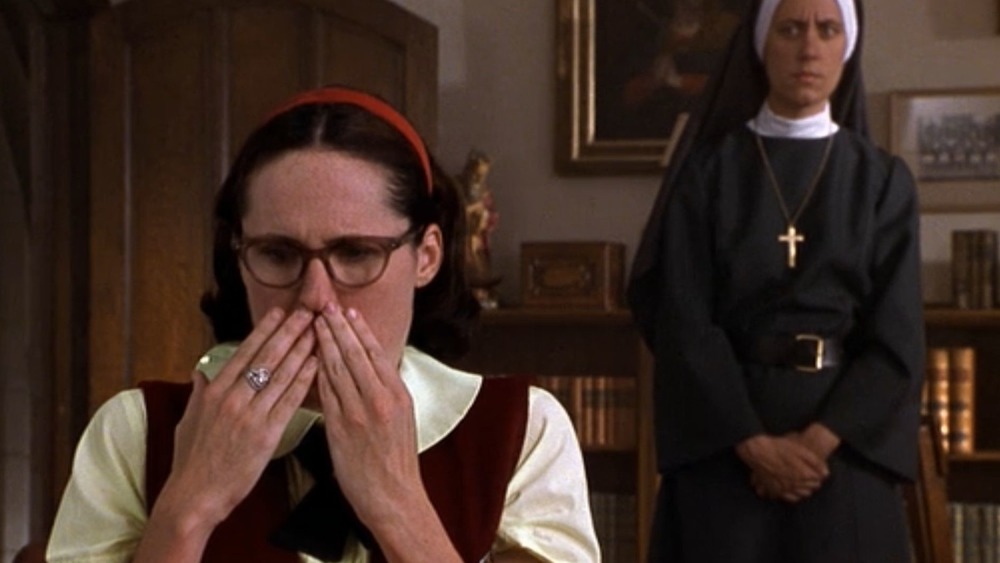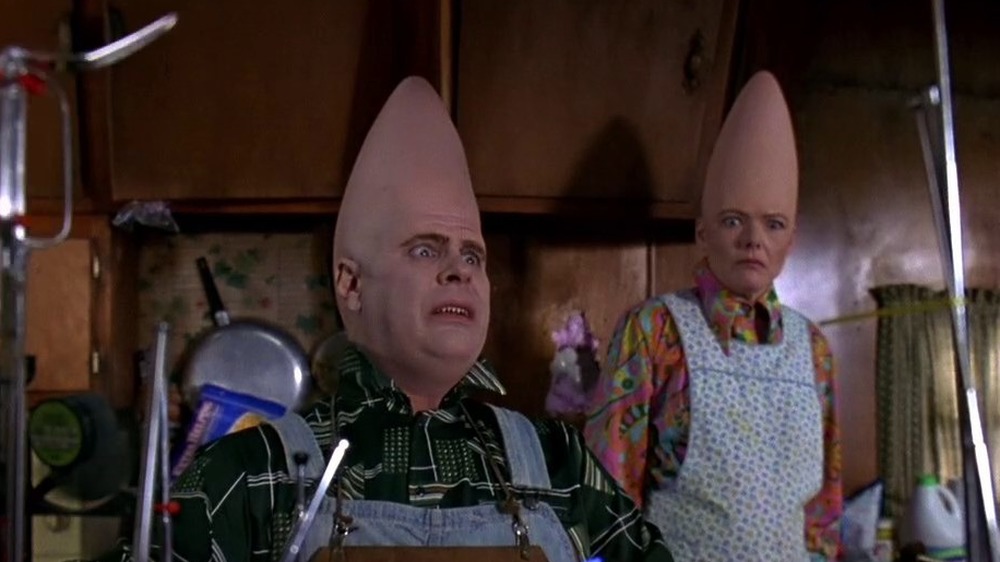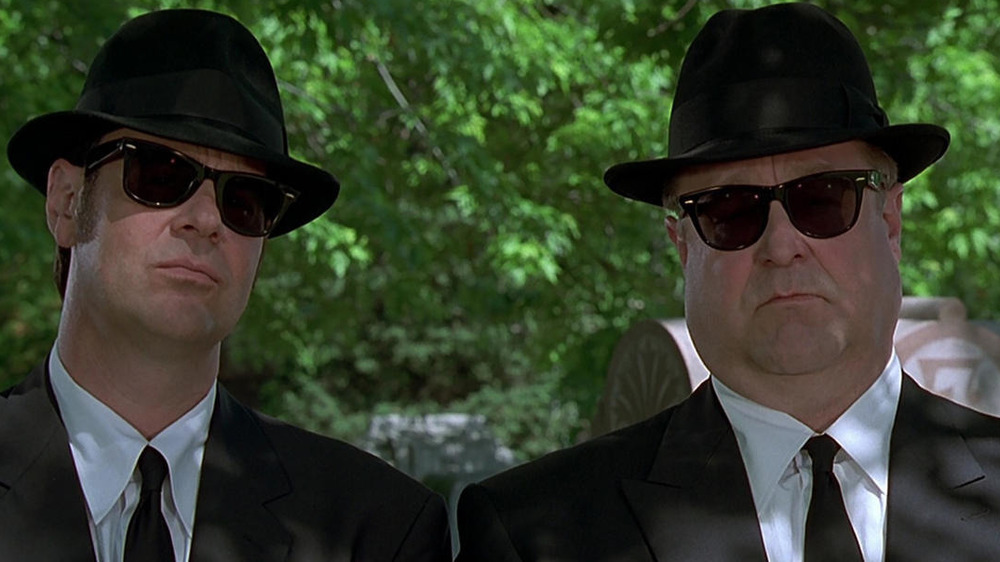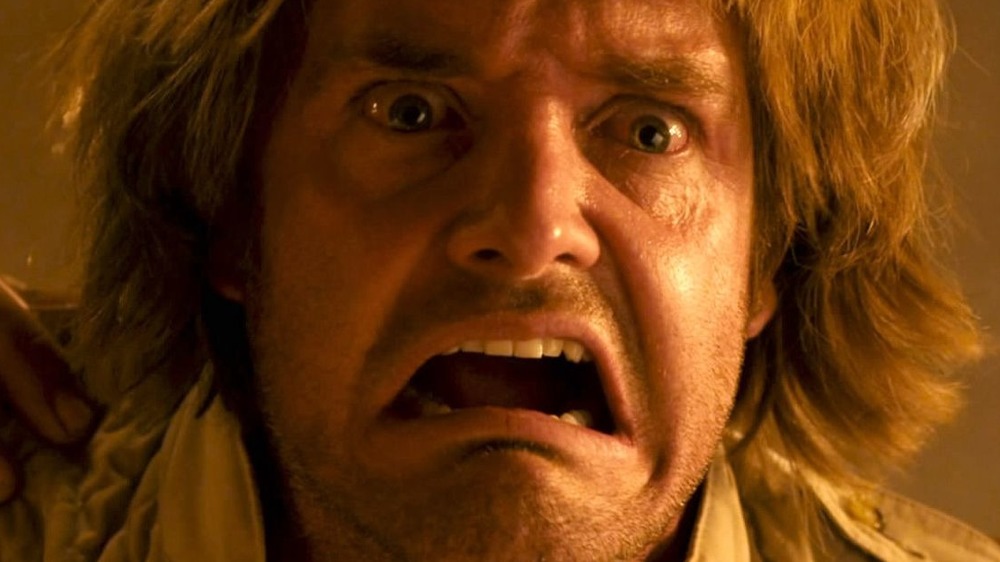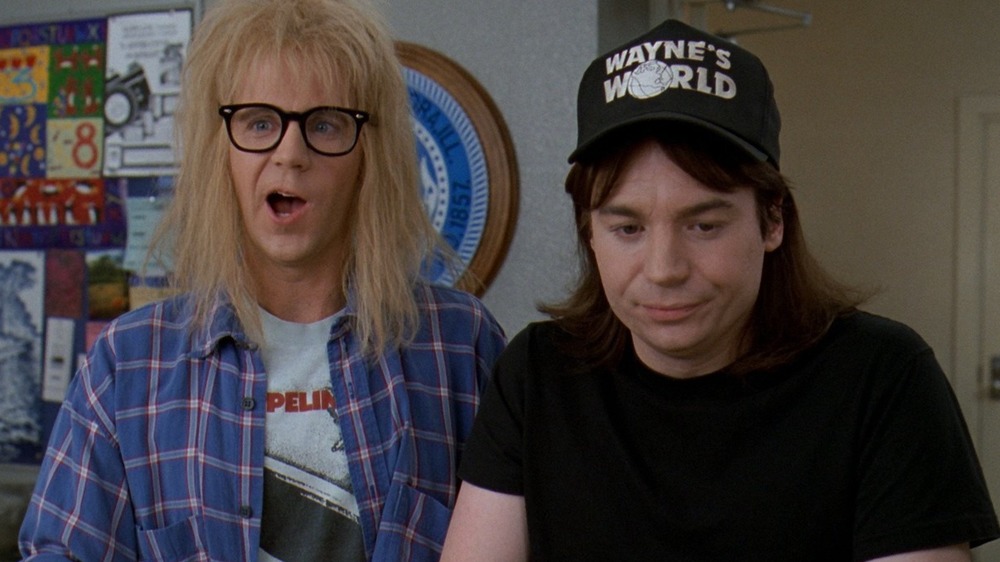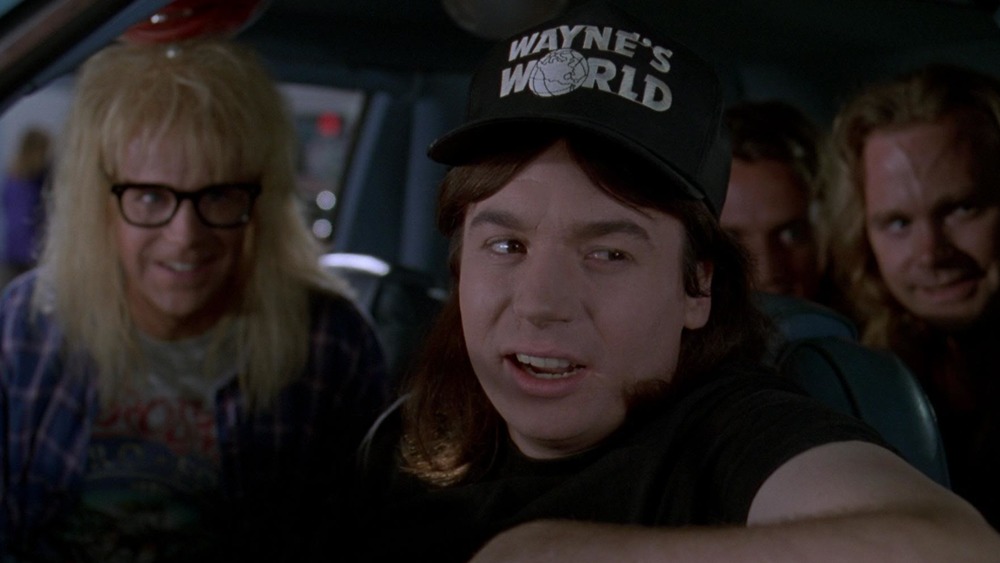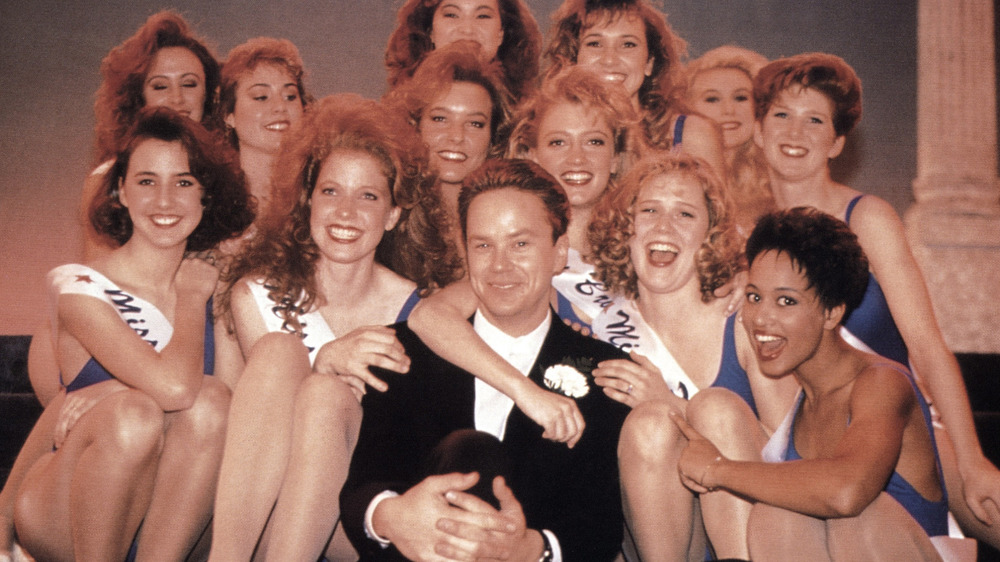SNL Movies Ranked
October 11, 1975 is the day Saturday Night Live debuted "live from New York" on NBC from Studio 8H at Rockefeller Center. Dan Aykroyd, John Belushi, Chevy Chase, Jane Curtin, Garrett Morris, Laraine Newman, and Gilda Radner were the first seven "Not Ready for Primetime Players," a number that would grow to more than 150 cast members over the next 45 years. But while SNL started the these comedians' careers, it was never meant to contain them. Chase would famously leave the series after just one season to make it big in movies (with Bill Murray taking his place), while John Belushi would star in Animal House in 1978.
Since then, Lorne Michaels' creation has launched the careers for more big-screen comedians than any other show. And with so many SNL stars making their way to the movies, Michaels and company naturally wanted to get in on the action. And why not? SNL's characters are some of the most famous in pop culture, with quips, jokes, and catchphrases that millions remember years later. But what works in a five-minute skit doesn't always translate to a 90-minute runtime. While some SNL movies took their performer's careers to the next level, others are cinematic embarrassments. Using Rotten Tomatoes as our guide, here are the SNL movies ranked!
It's Pat is unambiguously awful
Some SNL characters stand the test of time, while others are products of their time. And then there's Pat, who was cringey even at the time. Played by Julia Sweeney, Pat O'Neil Riley was a nerdy, bizarre person we were supposed to laugh at for being nerdy and bizarre. As mean as that is, it's nothing unusual in mainstream comedy, but it gets worse. Much worse. Pat was "funny" not only because the character was awkward ... but also androgynous. Skits featured other characters essentially sexually assaulting the character in order to discover what was in Pat's pants. Comedy brilliance like this is too big for TV — Pat needed a movie!
Disturbingly, It's Pat: The Movie was produced by Walt Disney Pictures (via Buena Vista Pictures) with taglines like "The Sex Symbol of the '90s" and "A Comedy That Proves Love is a Many Gendered Thing." Woof. Disney must've realized the abomination it had on its hands and only opened It's Pat in limited release on August 26, 1994. It's Pat: The Movie earned about $60,000 (you read that right) and a 0% Tomatometer score, the worst box office and ratings of any SNL movie ever. That, ladies and gentlemen, is a disaster. And Sweeney has been coming to terms with Pat's "legacy" ever since, giving mea culpa interviews to The New York Times and The Seattle Times. Pat's co-stars couldn't figure out what the character's gender was, and we can't figure out what SNL was thinking.
The Ladies Man failed to seduce moviegoers
With ten seasons under his belt, Tim Meadows' 1991-2000 SNL run is one of the longest in the show's history. At the time of his retirement, Meadows was the second longest-running member behind only Al Franken. Meadows hoped to end his run with a bang, but instead, it ended with a bomb. Leon "The Ladies Man" Phelps was Meadows' most famous character. He was a suave, afro-studded radio show host right out of the '70s, though still making lewd, suggestive comments in the '90s. However, The Ladies Man was part of a '90s trend for SNL movies — ideas that worked during six-minute skits but died slow deaths over feature-length runtimes.
As Peter Bradshaw of The Guardian wrote, "When Meadows' three-minute sketch persona is stretched out to cover a whole movie, the cracks soon start to show." As a result, the film earned an 11% Tomatometer score. The Ladies Man's audience score was slightly better ... but still really bad at 42%. And its box office was a bust with $13 million on an $11 million budget. Thus ended an era of failure for movies based on mid-'90s SNL characters. Following the back-to-back-to-back mediocrity of Paramount's A Night at the Roxbury, Superstar, and The Ladies Man, as well as Universal's Blue Brothers 2000 (which featured 1970s characters), SNL got out of the movie business for a decade.
What is love? Not A Night at the Roxbury
Will Ferrell is one of the most bankable names in comedy, with box office totals of $1.3 billion domestic and $4.3 billion worldwide. But the man who became world-famous playing '70s anchorman Ron Burgundy, redneck racecar driver Ricky Bobby, and Buddy the Elf was a long, long way away from that during 1998's A Night At The Roxbury.
Ferrell was on SNL for seven years, from 1995-2002, and he might've left sooner had Roxbury not bombed with $30 million in 1998, less than half as much as the $75 million that his breakout role in Old School earned in 2003. Ferrell had several memorable characters during his seven-year run, including Harry Caray, Marty Culp, and Craig the Cheerleader. The one who seemed the least likely to warrant a movie was Steve Butabi, who — along with his brother, Doug (played by Chris Kattan) — was an obnoxious clubgoer who "danced" to Haddaway's "What Is Love?"
It was kinda funny for six minutes, but did these guys ever even talk on SNL? Did we even know their names? Didn't matter. Paramount saw bucks in the Butabis, but they were the only ones. Besides bombing, A Night At The Roxbury earned a disastrous 11% critic's score, stalling Ferrell's film career and killing Kattan's. However, perhaps time has been kind to Roxbury, as its audience score is a strangely fresh (and appropriately "nice") 69%. What is love, indeed?
Moviegoers weren't motivated to see Stuart Saves His Family
Al Franken has been an SNL fixture since the start, writing for the series and sometimes acting from 1975-1980, writing and performing from 1985-1995, and then briefly returning in 2008. Franken's most memorable creation during his nearly two combined decades on SNL was Stuart Smalley, a dweeby, soft-hearted, self-help guru who hosted "Daily Affirmations with Stuart Smalley." Stuart is most fondly remembered for his mantra, "I'm good enough, I'm smart enough, and doggone, people like me!"
People did like Stuart but not enough to justify a 99-minute runtime. As the title suggests, Stuart Saves His Family brought the character back home as he tried to save his blue-collar, backwoods family from substance abuse, which just screams comedy, right? Despite being Harold Ramis' directorial follow-up after Groundhog Day and featuring a strong supporting cast, including Vincent D'Onofrio, Stuart Saves His Family is much less than the sum of its parts. In fact, the movie earned a rotten 30% critics' score and 52% audience score, as well as a horrific $911,310 gross. Stuart may have saved his family, but no amount of daily affirmations could save this train wreck.
Superstar was the pits
Superstar is the only example on this list of a fictional character getting top billing. We think the filmmakers might've been overestimating Mary Katherine Gallagher's star power.
Gallagher was Molly Shannon's most famous character during her six-year run on SNL from 1995-2001. A brutally awkward Catholic high school student, Gallagher yearned to be cool like so many of us do during our teen years. Unlike most of us, though, she couldn't stop sticking her hands under armpits and sniffing them whenever she was nervous. Shannon and team were wise enough to know that laughing at an awkward teenager wasn't funny, so they also made Gallagher a delusional egomaniac who yearned to be a "superstar" despite her total lack of talent and horrible stage fright. And, y'know, her habit of sniffing her pits.
In the late '90s, Paramount Pictures saw profit in SNL characters, with Jonathan Dolgen, then-chairman of Paramount's parent-company, Viacom, telling the Los Angeles Times, "It's a great business for us to be in," citing the low costs, respectable returns, long shelf-life, and built-in audience. So commercially, SNL movies like Superstar were justified, kinda. The film actually earned $30 million on a $14 million budget. But critically, its 32% critics' score is the stinky pits. However, Mary Katherine managed a fresh 60% audience score, so maybe those stuffy critics just don't know a superstar when they see one.
Coneheads was unacceptable
"Strike while the iron's hot" is one of the oldest sayings in show business. That mantra has certainly applied in the case of SNL movies, with most films being released within five years of their character's debut. That isn't a bad strategy. Can you imagine anyone going to see a Leon Phelps or Stuart Smalley movie 16 years after the characters premiered? Alas, that's exactly what Paramount expected with Coneheads, which came out in 1993, nearly two decades after the characters' SNL debut on January 15, 1977. While that speaks to the continuing popularity of the original 1970s cast and characters, we think Paramount might've been a bit ambitious.
In their defense, most SNL movies featured mega-stars like Mike Myers and Will Ferrell "before they were famous" or career supporting actors like Tim Meadows and Molly Shannon. Coneheads starred Dan Aykroyd, who'd spent the past decade starring in blockbusters like Trading Places and Ghostbusters. An Aykroyd-led Coneheads seemed like a safe investment, especially with an all-star cast of SNL up-and-comers like David Spade, Chris Farley, and Adam Sandler. Alas, Coneheads only mustered a meek $21 million, while its Tomatometer score was a comparably bad — 35% from critics and 37% from audiences. We'll never know if Coneheads would've done better if it was released in the '70s, but we know for sure fans no longer cared in the '90s.
Making a Blues Brothers without Belushi was a bad idea
In the late '90s, while Paramount was busy making movies based on contemporary SNL characters like Mary Katherine Gallagher and the Butabi brothers, Universal tried to get the band back together and revive the Blues Brothers brand 18 years after the original film. In an era when every IP had to have "2000" attached to it, Blues Brothers 2000 at least had the distinction of being one of the first. Of course, that was because it was released on February 6, 1998 ... two years before 2000.
Dan Aykroyd was back, as was original Blues Brothers director John Landis. However, stepping into Belushi's blue suede shoes was John Goodman. Granted, he's an actor we love, but whoever thought it was a good idea to make a Blues Brothers movie without John Belushi as Jake Blues needs to have his movie license revoked. Attempting to recreate Belushi's singular brilliance 16 years after his tragic death was just a bad idea. Critics and moviegoers agreed, as Blues Brothers 2000's Tomatometer scores were 46% (critics) and 37% (audience), while the box office was just $14 million – more than 75% less (not accounting for inflation) than the $57 million The Blues Brothers earned in 1980. Blues Brothers 2000 wasn't just a bad idea, it was a bomb.
Moviegoers skipped the MacGyver spoof, MacGruber
MacGruber is a movie based on an SNL character from the 2000s, based on a TV show character from the 1980s. Talk about meta. It was also the first SNL movie in a decade. Following the major critical drubbing and minimal commercial success (if any) of A Night at the Roxbury, Superstar, and The Ladies Man, Paramount got out of the SNL movie business, while Universal was licking its wounds over Blues Brothers 2000's failure in 1998. It'd be ten years before Universal got back in the SNL business. And in that time, several new cast members took over, including Bill Hader, Tina Fey, Rachel Dratch, Kristen Wiig, and Will Forte.
SNL itself underwent a makeover, going from the subversive "Not Ready for Primetime" satire it had been for decades into a reliably amusing (but no longer groundbreaking) comedy institution, a la The Tonight Show. While SNL had more popular characters, MacGruber was the perfect emblem for the era — a character that poked fun at a show that went off the air in 1992. Universal figured MacGruber was a bankable character following some well-received Super Bowl commercials for Pepsi in 2009, and the studio released a movie in 2010. Audiences weren't amused, as MacGruber earned around $8.6 million on a $10 million budget, while its 35% audience score was even lower than the 48% critic's score. Following MacGruber's failure, there hasn't been a single SNL movie, though MacGruber is set to a get a streaming series on Peacock.
Wayne's World 2 was a step down from the original
Before there was Austin Powers and Shrek, there was Wayne Campbell. Mike Myers was one of the breakout stars of SNL during his six-year run from 1989 to 1995, with some of the show's most popular characters, including short-tempered Scotsman Stuart Rankin and the child who drew disturbing pictures, Simon. But none was more famous than Wayne Campbell, the long-haired, basement-dwelling, wannabe guitarist, who — alongside his buddy Garth Algar — hosted the public access TV show "Wayne's World."
So popular was Wayne Campbell that Paramount made a 1992 movie about him that did pretty well — well enough that they released another movie the very next year. Wayne's World 2 suffers from the standard sequel drop-off, but it's still one of the best SNL movies of all time, earning a 60% critic's score and 63% audience score. However, its $47 million box office was about a quarter what Wayne's World earned a year earlier, putting Wayne and Garth's party to an abrupt close, at least on the big screen. Myers would leave SNL two years later in 1995, launching a wildly successful film career that's netted $2.2 billion domestically and $4.4 billion worldwide. Excellent!
The Blues Brothers is a comedy classic
SNL's impact on American pop culture was almost immediate, but it would be five years before Hollywood showed up at Studio 8H at Rockefeller Plaza in New York City. The late 1970s and early 1980s were a golden age for cinematic comedy, as SNL's cast members brought their brand of humor to classics like Animal House, Caddyshack, Trading Places, Beverly Hills Cop, and Ghostbusters. As for The Blues Brothers, it's unique because it's not only a classic comedy starring SNL alums, but it was the first film to feature SNL characters — Jake and Elwood Blues.
John Belushi and Dan Aykroyd played the titular brothers — two nonchalant criminals/singers who go "on a mission from God" to rescue their childhood orphanage from the IRS by getting their band back together. With musical legends James Brown, Ray Charles, Aretha Franklin, and Cab Calloway along for the ride, and Carrie Fisher playing Belushi's psychotic and homicidal scorned girlfriend, The Blue Brothers stands among the era's best. The critic's score is certified fresh, but it's surprisingly soft at 73%. However, moviegoers have better taste and gave it 92%, the highest on this list. Its box office was an impressive $57 million, around $190 million in today's dollars, making it one of the top 10 for the year, but its high $27 million budget probably scared Universal away from any immediate sequels or other studios from making SNL movies.
Wayne's World is the highest-grossing SNL movie by far
Besides The Blues Brothers in 1980, Hollywood wasn't in the SNL business. SNL was more of a launching pad, with alums Chevy Chase, Bill Murray, John Belushi, Dan Aykroyd, and Eddie Murphy becoming some of the biggest comedy stars of the 1970s and 1980s. But as far as SNL characters? They were relegated to Saturday nights. Maybe in another universe there are movies with "Two Wild & Crazy Guys," "Mister Robinson's Neighborhood," "Samurai Delicatessen," "Mr. Bill," or any number of unforgettable characters, but not in this one. Hollywood just didn't think you could turn a five-minute skit into a 90-minute comedy (looking at this list, maybe they're right). That all changed in 1992 with Wayne's World.
It's hard to say what Paramount was expecting from the comedy by Penelope Spheeris (the acclaimed director of The Decline of Western Civilization), one starring SNL newbies Mike Myers and Dana Carvey. What they got was a genuine blockbuster. Wayne's World earned a staggering $121 million domestically and $183 million worldwide, making it the fifth biggest movie of 1992 at the domestic box office. Its Tomatometer score was also impressive, with an across-the-board fresh 84%. As a result, Hollywood figured SNL's characters were smart business, with Paramount leading the way, releasing six SNL movies over the next decade. None reached the box office excellence of Wayne's World, which remains the highest-grossing SNL movie, not adjusted for inflation, and one of best ever.
Political mockumentary Bob Roberts wins the SNL race
Surprised? Same here. Tim Robbins wrote, directed, and starred in this satirical mockumentary that started as an SNL segment. Robbins played the dimwitted, folk-singing, firebrand who runs for senator in Pennsylvania against the incumbent Democrat senator, played by Gore Vidal, with Giancarlo Esposito (decades before Breaking Bad and The Mandalorian) as a journalist on his trail. Bob Roberts was based on an SNL skit Robbins directed in 1986, though Roberts was originally a yuppie businessman according to a 2017 interview with Entertainment Weekly.
Bob Roberts might have remained a lost SNL skit if not for the late Alan Rickman, who was riding high from Die Hard and who Robbins says "saved the film" when he signed on for a supporting role as Lukas Hart III, Roberts' slimy campaign manager. Even with Rickman on board, as well as cameos from stars like Robbins' longtime partner, Susan Sarandon, Bob Roberts failed at the box office, earning only about $4.3 million in 1992. However, it was a much bigger hit with critics, with a 95% critic's score and a 78% audience score. Largely forgotten today, Bob Roberts sneaked its way to the top of our list, and it's both one of the best mockumentaries and the highest-ranking SNL movie on Rotten Tomatoes.
